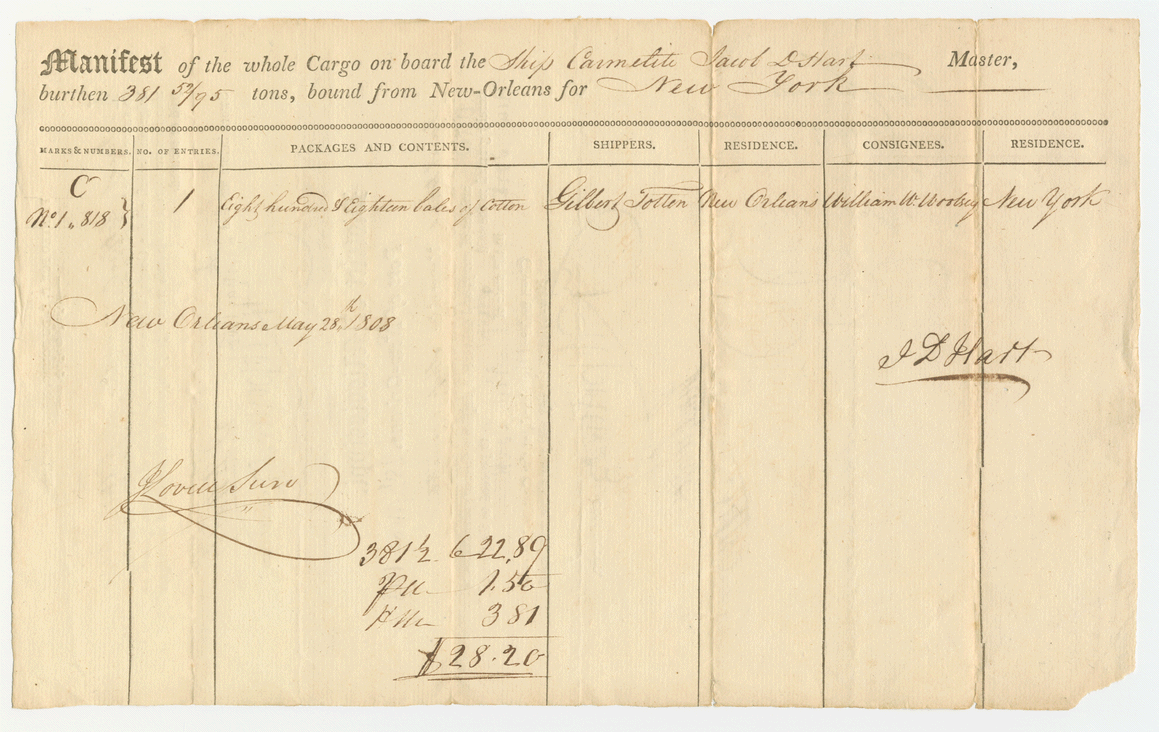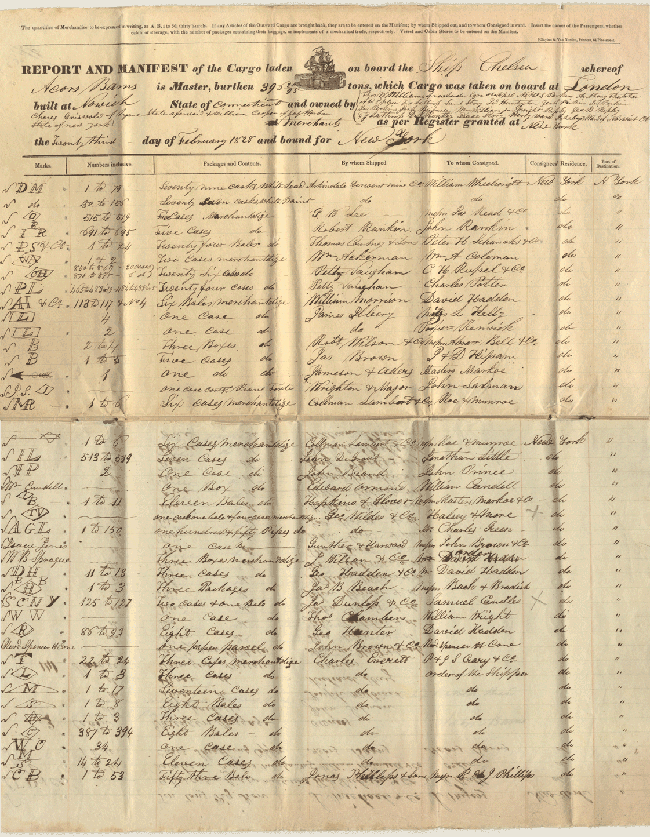Printed document of various sized and formats. A typical Manifest would have columns for marks and numbers, packages and contents, numbers of entries, shipper, consignee, etc., in addition to the vessel’s name and home port, tonnage, owner’s names, and the ports of departure and destination. Included also is a sworn statement of accuracy, signed by the master, and verified with a statement signed by the collector. These statements are often found on the backside of the smaller documents. Small engravings are also occasionally found.
A Manifest is the detailed statement or invoice of a vessel’s cargo. It includes such information as the Bills of Lading numbers, the numbers of packages and their identifying marks, the names of the shippers and consignees, ports of destination, etc. More specifically there are outward (or clearing Manifest), inward Manifest, coasting Manifests, and passenger Manifests. The kind of information required could vary somewhat form one kind of Manifest to another, but their purpose was the same. This was the official document consulted when any legal action might be necessary relative to a vessel’s cargo. The Manifest, properly made out and sworn to by the master, had to be presented to the collector, consul, or other appropriate authority, before a ship entered or cleared port. Manifests are fairly common maritime documents, and they can be an informative research source for the maritime historian.


Manifests like the ones illustrated here are commonly found in collections of maritime business papers. The one from New Orleans in 1808 is for a cargo of 818 bales of cotton, New Orleans to New York. The other is a Manifest (only the upper half shown) for a large general cargo shipped from London to New York in 1828. The uniform handwriting on this document would indicate that it was probably the official copy taken aboard the vessel and produced upon arrival.
